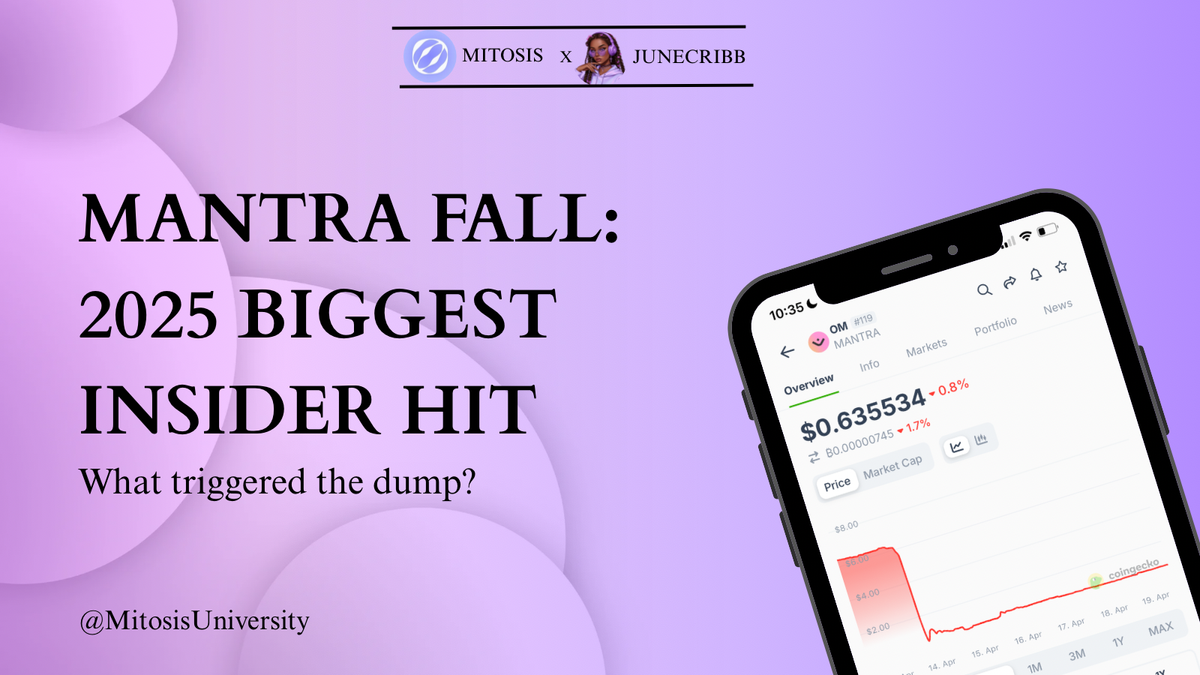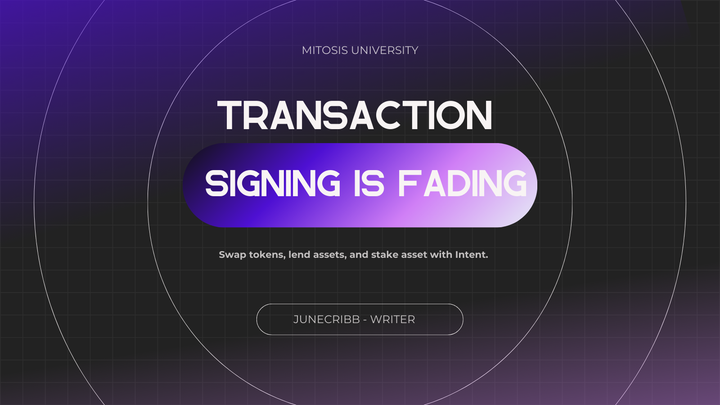MANTRA FALL: 2025 BIGGEST INSIDER HIT.

We’ve seen projects dumped before but nothing quite like this.
Some called it a crime scene.
Investors were left holding a token that lost over 99% of its value within minutes.
This is the story of Mantra (OM) a collapse so sudden and severe, it became one of the most discussed implosions of 2025.
On April 13, OM plummeted and this time, the cause wasn’t macro conditions or a Trump-induced market reaction it was insiders. A coordinated sell-off triggered a devastating chain reaction
What Was Mantra?
Launched in 2020, Mantra DAO started as a community-governed DeFi platform with features like staking, lending, and on-chain governance.
Built initially on Ethereum, Mantra later expanded into a multi-chain protocol, integrating with Binance Smart Chain (BSC) and exploring Polkadot’s Substrate framework, hinting at ambitions for deeper interoperability.
It's native token, $OM, served multiple roles:
- Staking rewards for securing the network and participating in protocol-level decisions.
- Governance voting on proposals ranging from ecosystem grants to protocol upgrades.
- Utility functions, including fee discounts and protocol access.
By late 2022, Mantra started rebranding itself as Mantra Chain, a pivot toward real-world asset (RWA) tokenization, promising regulatory compliance and permissioned DeFi tools for institutions.
This pivot reflected a growing trend in the space: building infrastructure that could integrate traditional finance (TradFi) with blockchain in a compliant and auditable way.
The team gained particular traction in Hong Kong, collaborating in government pilot programs and positioning themselves as leaders in Asia’s push for regulated digital assets.
OM Price History: From DAO Token to RWA.
When OM launched in August 2020, it experienced typical altcoin volatility:
- A surge from $0.37 to $0.61, before sliding.
- By 2023, OM hit a bottom of $0.0175 yet still remained on watchlists due to the growing RWA narrative.
Then came 2024. The token soared:
- OM averaged $1.17 for the year.
- Closed at $3.83 in December.
- Touched over $6 in early April 2025.
Several catalysts drove it:
- Strategic partnerships with real-world financial players.
- CEX listings (including Binance), giving retail access.
- Social media hype, amplified by influencers and crypto YouTubers.
- A roadmap filled with DeFi primitives promising high yield, including tokenized treasuries, bond markets, and lending instruments.
- Airdrop campaigns targeting early users, stakers, and liquidity providers.
The combination of token utility, ecosystem participation, and real-world finance integration made OM one of the most hyped DeFi tokens in the RWA category.
Airdrops and Early Warning Signs
A significant portion of OM’s community engagement was built around incentivized participation, especially through airdrops.
However, cracks began to show:
- Delays and vague eligibility rules frustrated users.
- Some reported unannounced vesting schedules, despite fulfilling all criteria.
- Airdrop allocations were significantly smaller than expected for most participants.
While the token was distributed, on-chain data showed early sell pressure and suspicious internal wallet movements particularly from wallets that had access to large OM balances prior to distribution finalization.
These should have been red flags but holders were optimistic and the price held strong. Whales kept accumulating, and retailers stayed confident.
April 13: The Collapse
Then came April 13, 2025. OM fell from $6 to under $0.60 in under an hour with over $6 billion in market cap erased.
What happened?
- On-chain analysis revealed large coordinated sell-offs from wallets believed to be tied to Mantra insiders, particularly a group referred to as the "Kabal team."
- These wallets offloaded millions of OM tokens to centralized exchanges.
- A week prior, a wallet linked to the project burned over 21 million OM, valued at $130M. This was a move interpreted as a false signal of long-term commitment.
- While this token burn temporarily boosted bullish sentiment, large transfers to exchanges occurred in the background.
As the dump unfolded, Mantra’s official communication channels like Telegram, Discord, and X went completely silent. No statement. No reassurance. No crisis control.
Aftermath: A DeFi Disaster
The community response was swift and harsh:
- Crypto Twitter compared the event to past scams like BitConnect and OneCoin.
- Chinese crypto forums, already skeptical due to the founders’ past affiliations with questionable ICOs, declared it a vindication.
- Influencers and investors posted wallet traces and timelines, making it difficult for the team to claim ignorance or accident.
- Calls for regulatory investigation emerged, especially since the project had previously courted regulators in Hong Kong.
Co-founder John Patrick Mullin dismissed the uproar as “FUD,” citing their years of development.
But his response only increased the community's anger.
Recovery Effort
After the crash, OM briefly bounced back, rising from $0.37 to $1.10, but the recovery didn’t last. Analysts compared it to a typical “bull trap,” like what happened with Terra LUNA in 2022.
Things got worse when it was revealed that OM’s supply had been doubled from 888 million to 1.77 billion and switched to an uncapped model with 8% yearly inflation.
As of April 30, 2025, OM trades around $0.48 far below its peak.
Mantra has tried to recover by launching its mainnet and offering staking rewards, but trust in the project is still low.
Its future now depends on whether the team can be transparent and follow through on promises.
Lessons In Here: and DeFi Needs Accountability
This wasn’t just another failed token, it was a wake-up call.
OM had every advantage:
- Regulatory relationships
- Real-world utility narratives
- A well-funded team
- A loyal community
Yet it collapsed because of zero transparency, centralized token control, and a broken promise of decentralization.
This event highlights key structural flaws:
- Pseudo-governance: Despite promoting itself as a DAO, Mantra had centralized control over token supply and key wallets.
- Poor transparency: No real-time token distribution data, no public vesting schedules, and limited clarity on airdrop mechanics.
- Insider privilege: On-chain data suggested insiders had early access to large allocations, used to front-run the market.
As the DeFi space grows, so must its technical standards not just in code, but in governance, tokenomics, and communication.
The OM collapse wasn’t a smart contract hack or market-wide black swan. It was preventable.
Conclusion
The Mantra (OM) crash will be remembered as one of the biggest insider-driven collapses in crypto history. It showed how even the most promising RWA tokenization projects can implode without accountability and transparency.
In the end, OM had the narrative, the infrastructure, and the regulatory access but failed where it mattered most: trust
Find out what's going on in Mitosis Ecosystem.
SOURCES



Comments ()